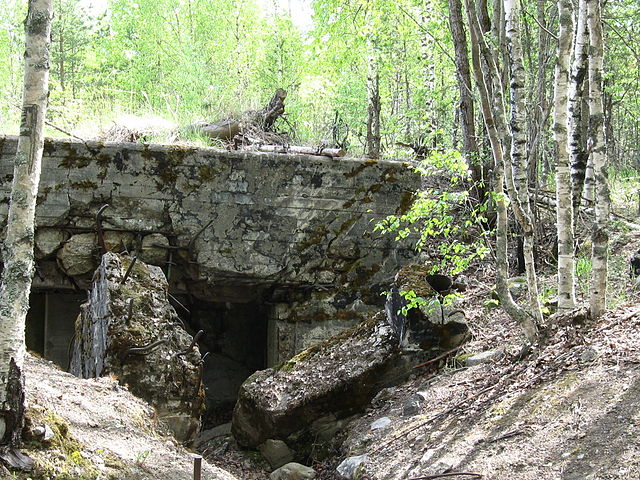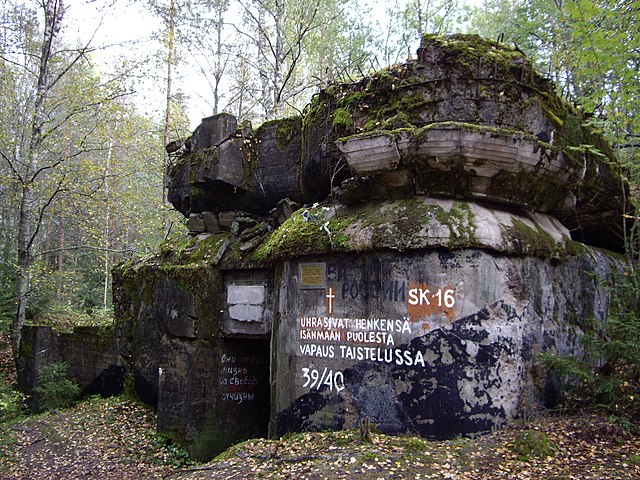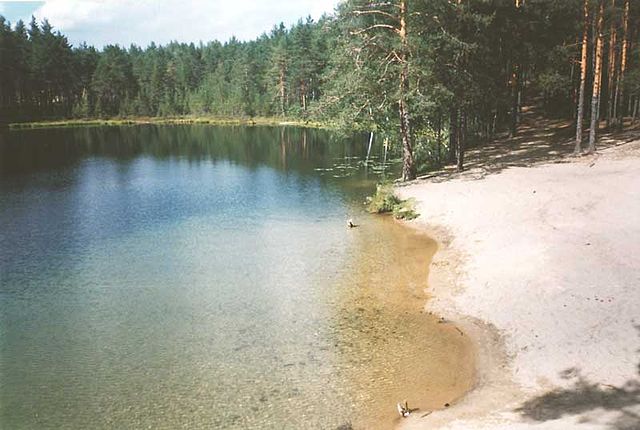The Mannerheim Line was a defensive fortification line on the Karelian Isthmus built by Finland against the Soviet Union. While this was never an officially designated name, during the Winter War it became known as the Mannerheim Line, after Finnish Army's then commander-in-chief Field Marshal Baron Carl Gustaf Emil Mannerheim. The line was constructed in two phases: 1920–1924 and 1932–1939. By November 1939, when the Winter War began, the line was by no means complete.
Carl Gustaf Emil Mannerheim in 1937
A bunker on high ground 65 (2009)
Bunker Sk16 (2009). The modern Finnish graffiti reads: They sacrificed their lives for the country in the struggle for freedom.
Bunker Ink5 (2011)
The Karelian Isthmus is the approximately 45–110-kilometre-wide (30–70 mi) stretch of land situated between the Gulf of Finland and Lake Ladoga in northwestern Russia, to the north of the River Neva. Its northwestern boundary is a line from the Bay of Vyborg to the westernmost point of Lake Ladoga, Pekonlahti. If the Karelian Isthmus is defined as the entire territory of present-day Saint Petersburg and Leningrad Oblast to the north of the Neva and also a tiny part of the Republic of Karelia, the area of the isthmus is about 15,000 km2 (5,800 sq mi).
Lake Vuoksa near Priozersk in the autumn of 2009.
Near Leipäsuo
Forest of Pinus sylvestris with an understory of Calluna vulgaris on the Karelian Isthmus
There are about 700 lakes on the isthmus








